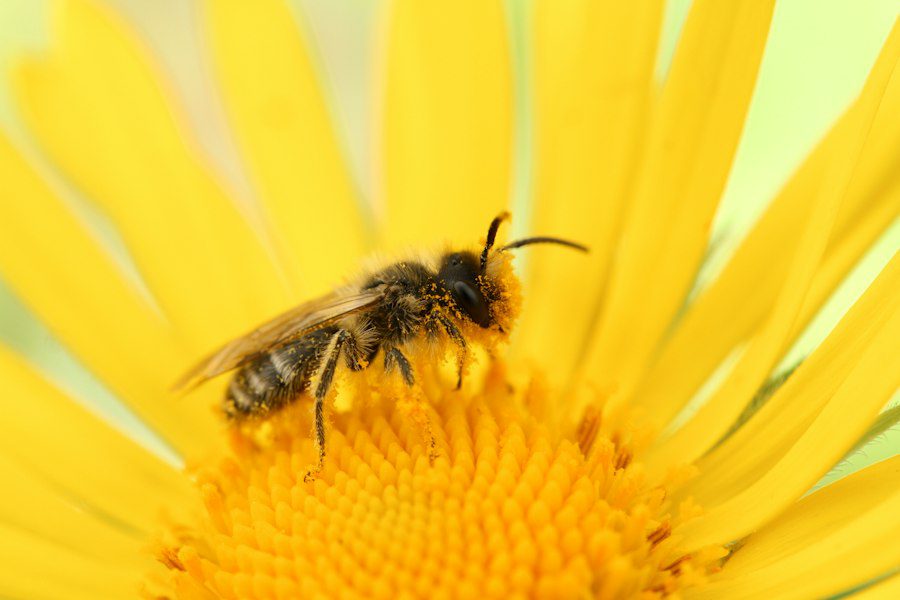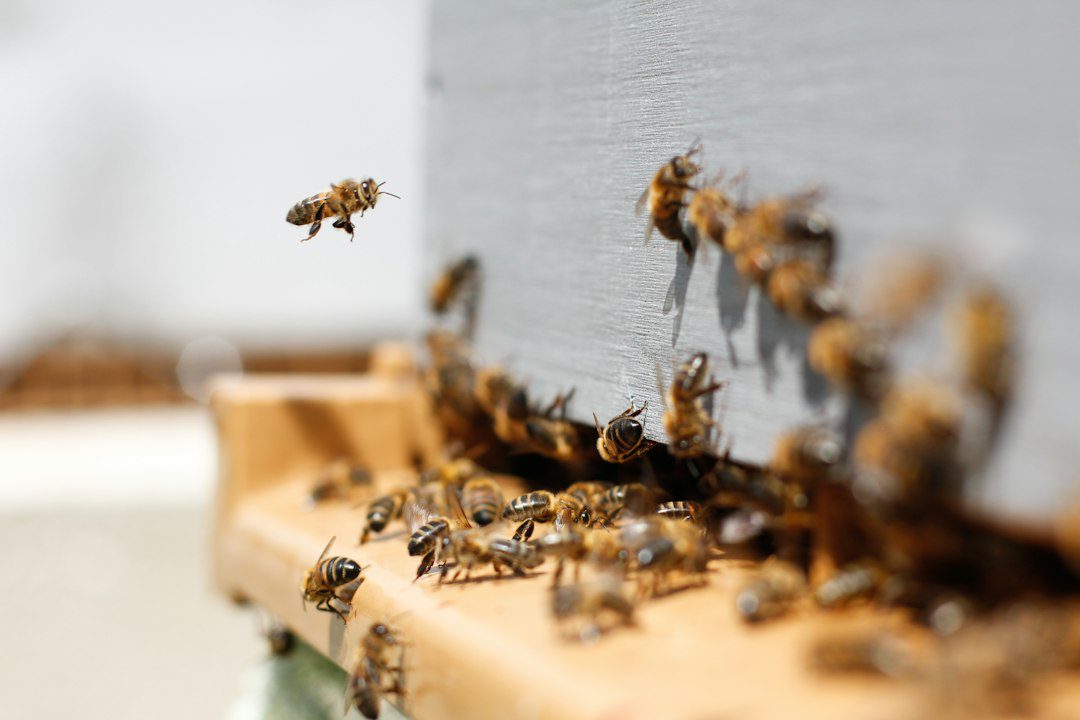Bees are often seen as small, harmless creatures that buzz around flowers and produce honey. However, their stings can be painful and even life-threatening. Understanding bee stings is important not only for our own safety but also for the conservation of these important pollinators. By knowing how to prevent and treat bee stings, we can coexist with bees and protect their vital role in our ecosystem.
Key Takeaways
- Understanding bee stings is important for our safety and the conservation of bees.
- When a bee stings, it injects venom that causes pain, swelling, and redness.
- The amount of venom in a bee sting varies, but multiple stings can be dangerous.
- Allergic reactions to bee stings can be life-threatening and require immediate medical attention.
- Treating a bee sting at home involves removing the stinger, cleaning the area, and applying ice or a topical cream.
The Anatomy of a Bee Sting: What Happens When a Bee Stings You?
When a bee stings, it injects venom into the skin. The bee’s stinger is barbed, which means that it gets stuck in the skin when the bee tries to fly away. The venom sac remains attached to the stinger, continuing to pump venom into the skin. This is why it is important to remove the stinger as soon as possible to minimize the amount of venom injected.
The venom itself contains a mixture of proteins and peptides that cause pain and inflammation. It also contains histamine, which can trigger an allergic reaction in some individuals. The pain and swelling from a bee sting are caused by the body’s immune response to the venom.
The Venomous Truth: How Much Venom is in a Bee Sting?
The amount of venom in a bee sting can vary depending on the type of bee and the individual bee. Honeybees, for example, have a smaller amount of venom compared to other types of bees. However, they are more likely to sting in large numbers, which can result in multiple stings.
Some people may be more sensitive to bee venom than others. This means that even a small amount of venom can cause a severe reaction. It is important to be aware of your own sensitivity to bee stings and take appropriate precautions.
The Painful Prick: Understanding the Symptoms of a Bee Sting
| Symptom | Description |
|---|---|
| Redness and Swelling | Localized reaction to the venom |
| Pain | Sharp or burning sensation at the sting site |
| Itching | Commonly occurs with swelling |
| Hives | Red, itchy bumps that may appear on the skin |
| Difficulty Breathing | Severe allergic reaction that requires immediate medical attention |
| Dizziness | May occur with severe allergic reaction |
| Nausea and Vomiting | May occur with severe allergic reaction |
The symptoms of a bee sting are usually immediate and localized to the area where the sting occurred. Common symptoms include pain, swelling, redness, and itching. The severity of these symptoms can vary depending on the individual and the location of the sting.
In some cases, more severe symptoms may occur. This can include difficulty breathing, dizziness, nausea, and swelling of the throat or tongue. These symptoms may indicate an allergic reaction and require immediate medical attention.
Allergic Reactions: When a Bee Sting Becomes Life-Threatening
For some individuals, a bee sting can trigger a severe allergic reaction known as anaphylaxis. This is a life-threatening condition that requires immediate medical attention. Symptoms of anaphylaxis include hives, difficulty breathing, wheezing, rapid heartbeat, and swelling of the face, throat, or tongue.
If you have a known allergy to bee stings or have experienced a severe reaction in the past, it is important to carry an epinephrine auto-injector (such as an EpiPen) with you at all times. This can help to quickly treat an allergic reaction until medical help arrives.
First Aid for Bee Stings: How to Treat a Bee Sting at Home

If you are stung by a bee, there are several steps you can take to treat the sting at home:
1. Remove the stinger: Use a credit card or your fingernail to scrape the stinger out of your skin. Do not use tweezers or squeeze the stinger, as this can release more venom into your skin.
2. Clean the area: Wash the area with soap and water to prevent infection.
3. Apply a cold compress: Place a cold compress or ice pack on the sting to reduce swelling and pain.
4. Take over-the-counter pain medication: If necessary, you can take over-the-counter pain medication such as ibuprofen or acetaminophen to help relieve pain and reduce inflammation.
If your symptoms worsen or you experience signs of an allergic reaction, seek medical attention immediately.
Bee Sting Prevention: How to Avoid Getting Stung
Preventing bee stings is the best way to avoid the pain and potential dangers associated with them. Here are some tips to help you avoid getting stung:
1. Wear protective clothing: When working outside or in areas where bees are present, wear long sleeves, pants, and closed-toe shoes. Consider wearing a hat and gloves as well.
2. Avoid bright colors and floral patterns: Bees are attracted to bright colors and floral patterns, so it is best to wear neutral colors when you are in areas where bees are present.
3. Be cautious around beehives: If you come across a beehive or see bees flying in and out of a hole or crevice, keep your distance. Do not try to disturb the hive or swat at the bees.
4. Stay calm and still: If a bee is flying near you, stay calm and still. Do not swat at the bee or make sudden movements, as this can provoke it to sting.
Bee Removal: How to Safely Remove Bees from Your Property
If you have a bee infestation on your property, it is important to have them removed safely and humanely. Bees are important pollinators and should not be killed unless absolutely necessary. Here are some steps you can take to safely remove bees from your property:
1. Contact a professional beekeeper: Many beekeepers are experienced in safely removing bees from properties. They can relocate the bees to a more suitable location where they can continue their important work as pollinators.
2. Hire a pest control company: If the bees pose a threat to your safety or cannot be safely relocated, you may need to hire a pest control company to remove them. Make sure to choose a company that specializes in bee removal and uses humane methods.
3. Seal entry points: Once the bees have been removed, it is important to seal any entry points to prevent future infestations. This may involve repairing holes or cracks in walls, roofs, or other structures.
The Role of Bees in Our Ecosystem: Why We Need to Protect Them
Bees play a crucial role in our ecosystem as pollinators. They are responsible for pollinating a wide variety of plants, including many of the fruits, vegetables, and nuts that make up our diet. Without bees, our food supply and ecosystem would be severely impacted.
In addition to their role in pollination, bees also contribute to biodiversity and help maintain healthy ecosystems. They are an important food source for other animals, including birds and mammals. Bees also help to improve soil fertility by pollinating plants that provide habitat and food for beneficial insects and microorganisms.
The Buzz on Bee Stings and the Importance of Bee Conservation
Understanding bee stings and how to prevent and treat them is important for our safety. By taking precautions to avoid getting stung and knowing how to properly treat a bee sting, we can coexist with bees and appreciate their important role in our ecosystem.
Protecting bees and their habitat is crucial for the health of our ecosystem. By supporting bee conservation efforts, such as planting bee-friendly flowers and avoiding the use of pesticides, we can help ensure the survival of these important pollinators for future generations. So let’s appreciate the buzz of bees while also respecting their stingers, and work together to protect these vital creatures.
If you’re curious about the amount of venom in a bee sting, you might find this article on the Houston Veterans website interesting. It provides valuable information on the topic and explores the potential effects of bee venom on humans. To learn more, check out the article here.
FAQs
What is a bee sting?
A bee sting is the wound caused by the stinger of a bee when it injects venom into the skin.
How much venom is in a bee sting?
On average, a bee sting injects about 50 micrograms of venom into the skin.
What is the composition of bee venom?
Bee venom is a complex mixture of proteins, enzymes, and other bioactive molecules, including melittin, phospholipase A2, hyaluronidase, and histamine.
What are the symptoms of a bee sting?
The symptoms of a bee sting include pain, swelling, redness, itching, and sometimes a raised welt or hives. In some cases, people may experience more severe symptoms, such as difficulty breathing, dizziness, or anaphylaxis.
How long does it take for a bee sting to heal?
Most bee stings heal within a few days to a week, depending on the severity of the reaction. However, some people may experience more prolonged symptoms, such as itching or swelling, for several weeks.
What should I do if I get stung by a bee?
If you get stung by a bee, you should remove the stinger as soon as possible, wash the area with soap and water, and apply a cold compress to reduce swelling. If you experience more severe symptoms, such as difficulty breathing or anaphylaxis, seek medical attention immediately.

